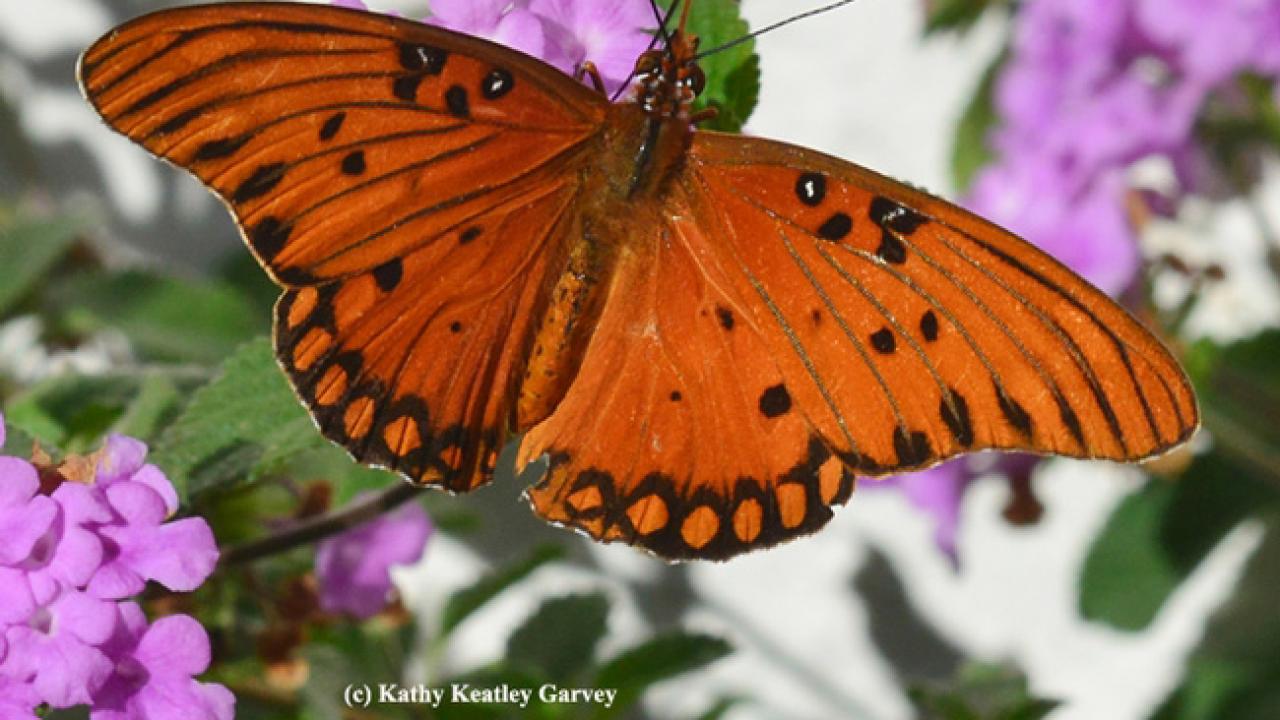
Drought Has Unexpected Consequences for Northern California Butterfly Populations
Quick Summary
- New research shows that drought-like conditions between 2011 and 2015 bolstered butterfly populations at low elevations in Northern California.
- At high elevations in the Sierra Nevadas, species richness and number of individuals decreased.
- The study's results raise questions about the methods researchers use to predict the effects of climate change on species.
Utilizing nearly 45 years of butterfly population field data, a new study published in Climate Change Responses reveals how recent record-setting temperatures and drought conditions affected butterfly populations at various elevations in Northern California.
Researchers from UC Davis, University of Nevada, Reno, University of Tennessee, Knoxville, and Texas State University found that the number of butterfly species and individuals observed per year increased at lower elevations during the 2011-2015 California drought but decreased at higher elevations.
“Counter to intuition, butterfly faunas near sea level apparently benefited from the drought, temporarily reversing long-term declines, while montane Sierran faunas were severely harmed,” said Distinguished Professor Arthur Shapiro, Department of Evolution and Ecology.
The study’s results also raise questions about the methods researchers use to predict how climate change will impact species. “What our study demonstrates is that our imaginations are not very good in terms of projecting how things are going to react,” Shapiro said.

Unexpected effects of the millennium drought
Over the course of the study, researchers visited 10 different sites spread between the coast and the Sierra Nevada, collecting population data from 163 butterfly species. Since the mid-1990s, butterfly populations at the study’s lowest elevation sites—which included sites in the Central Valley—were in a decline, while butterfly populations at high elevations sites remained relatively stable.
Then the 2011-2015 drought hit.
During the so-called millennium drought, butterflies at the low elevation sites experienced some of the most productive years in nearly two decades, increasing in both number of individuals and number of species. At high elevation sites, the effect was opposite, with number of species and individuals declining during the drought.
Shapiro cautioned that the study’s results don’t necessarily mean butterfly populations are rebounding in the long-term at low elevations.
“We have lost species on a regional basis and these didn’t come back, but the species that were still around ended up doing much better in the drought,” Shapiro said.
Making sense of population declines and rises
As to why low elevation butterfly populations did so well during the drought, Shapiro speculated that it might have something to do with the drought’s winter weather conditions. Butterflies do terrible in warm, wet winters, when the boundary level of the atmosphere—closest to the ground—is saturated.
“The combination of wet air, wet soil and warm temperatures—it’s very favorable for bacterial and fungal diseases to attack overwintering insects at ground level,” Shapiro said.

During the drought, the study’s low elevation sites experienced high desert winter conditions: warm sunny days and cold nights with minimal humidity. “Those are excellent conditions for butterfly overwintering, so we suspect that overwinter survival improves tremendously during drought at low elevations,” Shapiro said.
At high elevations, heavy snowfall usually means an excellent summer season for butterfly populations. The snowpack acts as an insulator, helping overwintering butterflies survive until spring. But during the drought, snowpack was likely poor, which may have translated into butterfly population declines at high elevations, according to Shapiro.
Additionally, the drought advanced the date of first spring flight for butterflies, leading to a larger flight window for low elevation butterfly populations and a compressed flight window for high elevation populations. A larger flight window gives butterfly populations more time to build their numbers.
A crystal ball for climate change?
One predictive measure researchers use to understand how climate change might affect animals and plants is called bioclimatic envelope modeling. In this approach, researchers quantify the environmental conditions a species requires to survive in the present. Then, using computer-generated climate modeling, the researchers try to predict how that species might fare in that same location, 10, 50 or 100 years in the future.
“In many ways, it’s the most rational way to address a question that has many limitations,” said Shapiro.
But species aren’t bound by computer models. They evolve, and, through natural selection, they can adapt to the environment around them. Shapiro noted that climate change may lead to environments that have no analogs in our modern world and that may be beneficial to certain species.
“We don’t have a crystal ball, and we can’t really imagine how a species will react to a totally novel climate regime,” he said. “The take-home from this is we would not have predicted from the conventional approaches, the outcomes that we’re seeing in this study.”
